Autumn appears to be coming to an end; with rain and cold temperatures becoming the norm. However, this deluge of rain and much cooler temperatures has not deterred me from visiting some of my favourite locations in search of fungi. There is still some autumn colour about and worth the effort of getting out there with my camera. It also gives me a good excuse to get away from my computer where I have been desk-bound more than I would like.
Not being a mycologist, identification is problematic and I find myself relying on field guides.
Below are some examples from my rummaging about in local woodlands near my home. Hope these images entice you to also explore your local woodland in search of fungi!
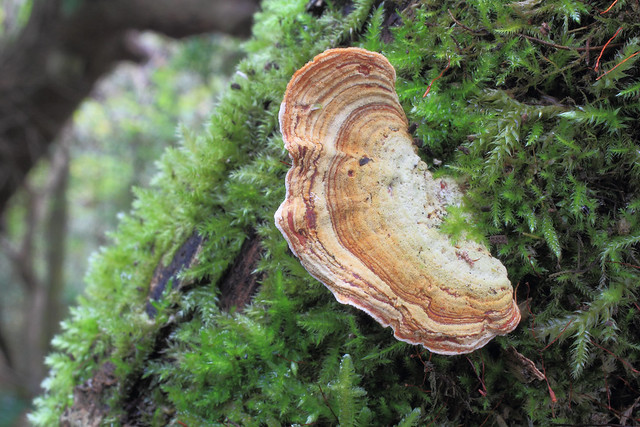
Tripe Fungus Trametes verisicolor
Canon EOS 7D, Tokina 35mm macro – f22 / 1 / ISO 400
Porthkerry Woods, Vale of Glamorgan, South Wales
Trametes versicolor, Turkeytail fungus can be found all through the year, but it is most obvious in the late autumn and winter months when deciduous trees are bare. This very variable fungus grows mainly on dead hardwood, including stumps and standing dead trees as well as fallen branches.
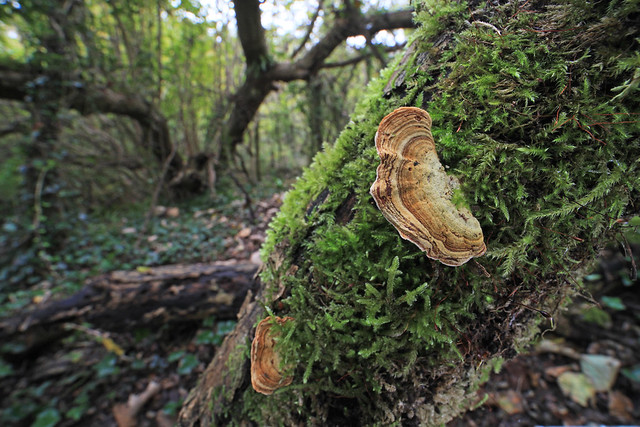
Tripe Fungus Trametes verisicolor
Canon EOS 5D Mark II, Laowa 15mm Macro, F22 / 1/1/5 / / ISO400
Porthkerry Woods, Vale of Glamorgan, South Wales
At last, I can get down to using the Venus 15mm macro on Canon 5d MkII (image above) Around 22f on tripod and natural light with reflector on right side of trunk. Finding this a very challenging lens to use as it doesn’t have an automatic diaphragm and so everything has to be done manually. Nevertheless, great for environmental captures and well worth the steep learning curve!
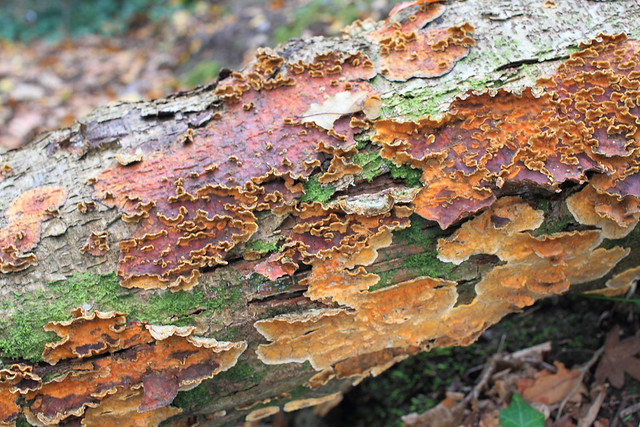
Crust Fungi
Canon EOS 7D, Tokina 35mm Macro, F5.6 / 1/50 / / ISO400
Porthkerry Woods, Vale of Glamorgan, South Wales
Bracket and crust fungi are as varied in size, colour and texture and grow on living or dead trees.

Crust Fungi
Canon EOS 7D, Tokina 35mm macro, F5.6 / 1/30 / / ISO400
Porthkerry Woods, Vale of Glamorgan, South Wales
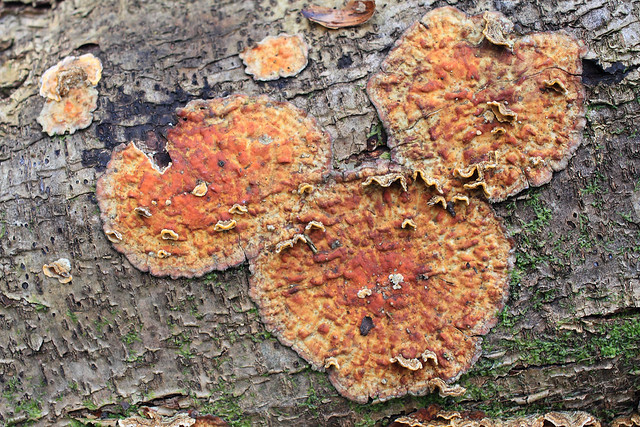
Crust Fungi
Canon EOS 7D 35mm F5.6 / 1.60 / / ISO400
Porthkerry Woods, Vale of Glamorgan, South Wales
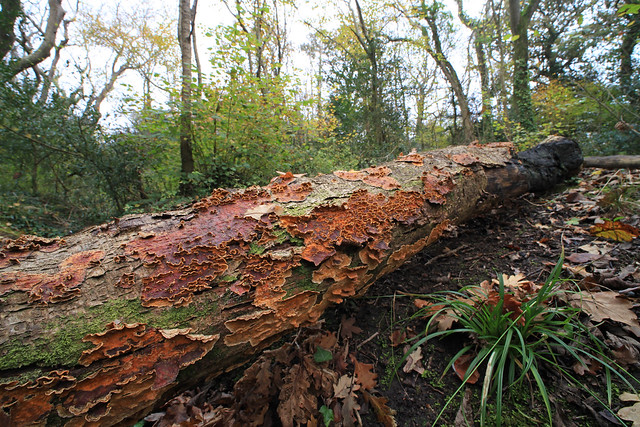
Crust and Bracket Fungi
Canon EOS 5D Mark II 15mm F0 / 1/5 / / ISO400
Porthkerry Woods, Vale of Glamorgan, South Wales
This rotting trunk was virtually covered in all kinds of different fungi with bracket and crusted forms being prominent.
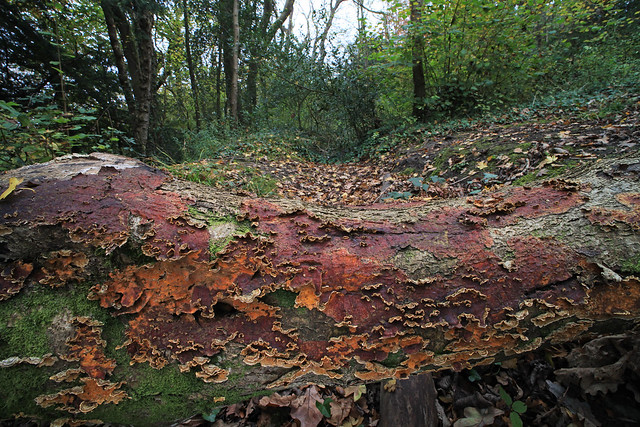
Crust and Bracket Fungi
Canon EOS 7D, Laowa 15mm macro, F22 / 0.6 / / ISO400
Porthkerry Woods, Vale of Glamorgan, South Wales

Amanita Rubescns
Canon EOS 7D, Tokena 35mm macro, F2.8 / 1/125 / ISO 400
Porthkerry Woods, Vale of Glamorgan, South Wales
One of the greatest challenges for anyone trying to identify this very common member of the Amenita genus is its tremendous variability. However, the pinkish colouring on the cap would indicate that this is probably a Rubescens (this epithet means reddening and refers to the colour from white to pinkish red when cut or damaged flesh of either cup or stem is exposed to air).

Amanita Rubescns
Canon EOS 7D, Tokena 35mm macro, F5.6 / 1/50 / ISO 400
Porthkerry Woods, Vale of Glamorgan, South Wales
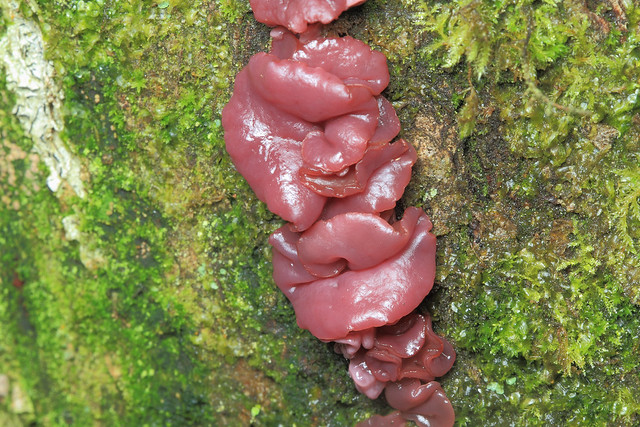
Purple Jelly Disc – Ascocoryne sarcoides
Canon EOS 7D EF100mm f2.8 Macro USM, f14.0 / 1/250 / ISO 400 / diffused flash
Parc Slip Nature Reserve, Bridgend, South Wales
Found mainly on the trunks and branches of dead Beech trees, this colourful wood-rotting fungus can form large and conspicuous clusters.
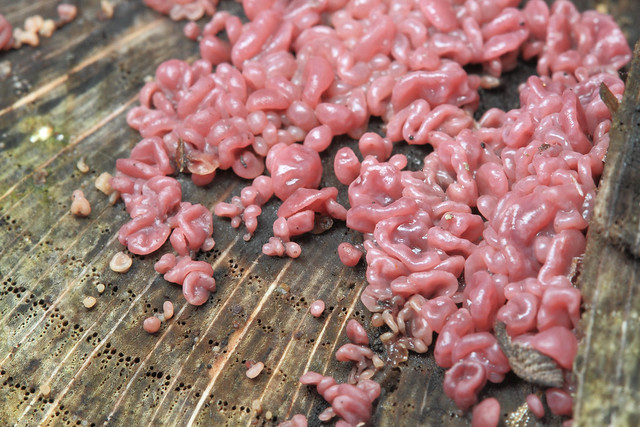
Purple Jelly Disc – Ascocoryne sarcoides
Canon EOS 7D EF100mm f2.8 Macro USM, f14.0 / 1/250 / ISO 400 / diffused flash
Parc Slip Nature Reserve, Bridgend, South Wales
Ascocoryne sarcoides is a funky mushroom that looks either like a jelly fungus or a cup fungus depending on which stage of its life cycle it is in when you find it. Here it is seen in its asexual, “anamorphic” stage (the sexual reproductive stage (morph), typically a fruiting body), it produces cloned conidia (asexual spores) and looks like purple globs of jelly, or gelatinized fingers.
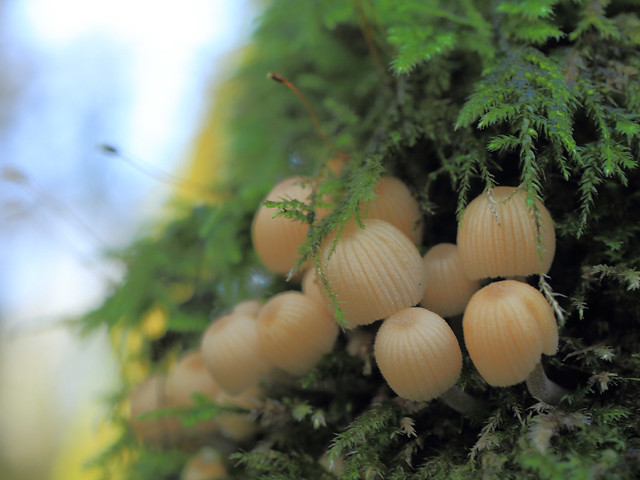
Bonnet – genus Mycena
Tokina 35mm Macro – f8.0 / 1/25 / ISO 400
Brynna Woods (near Bridgend) South Wales
Members of the genus Mycena are small fungi with distinctive conical or bell-shaped caps and a long, slender stipe. Cap colours are variable, with many sombre grey or brown; when moist they are usually strongly striated or grooved.

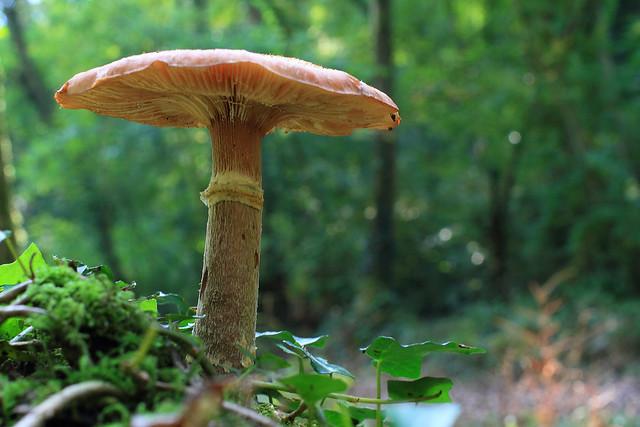
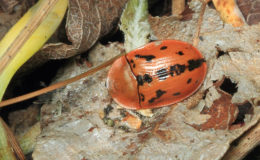
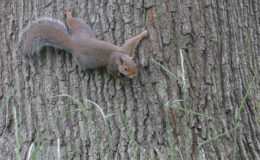
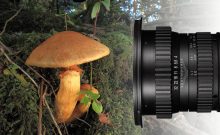
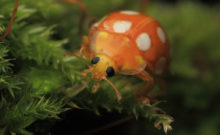
Leave a Comment